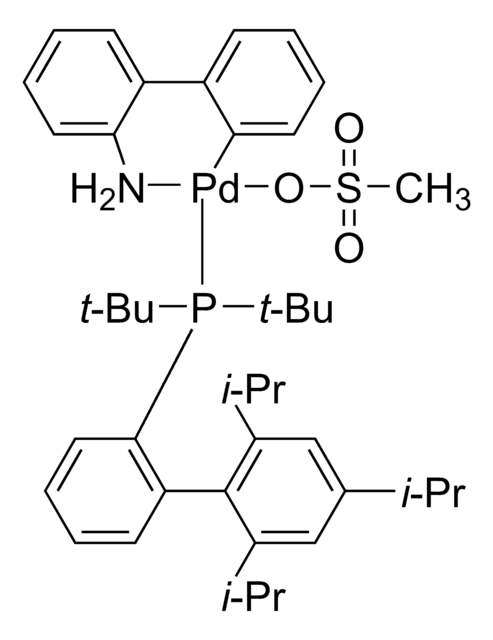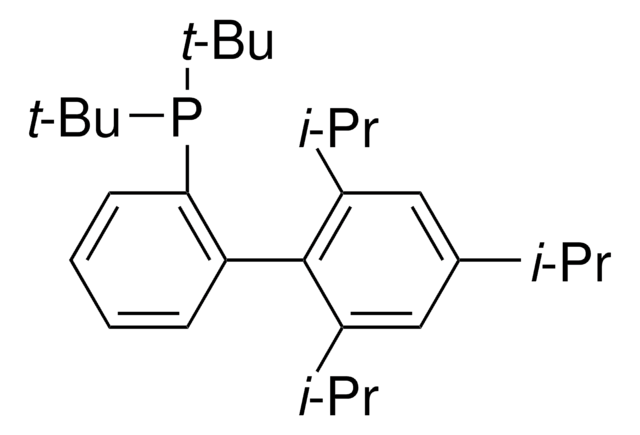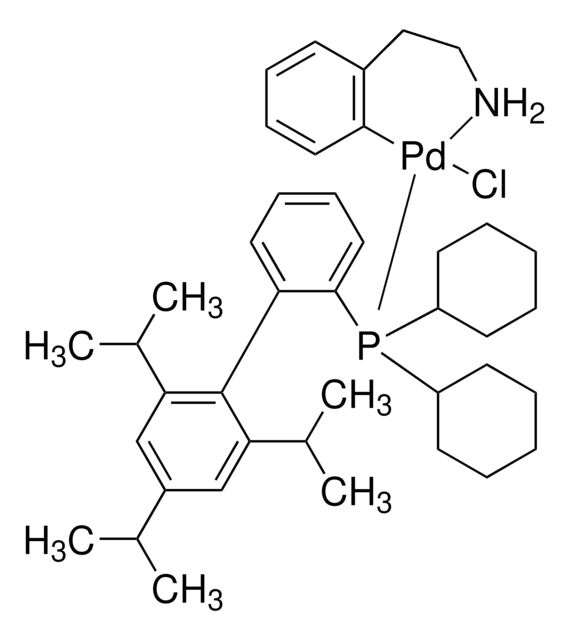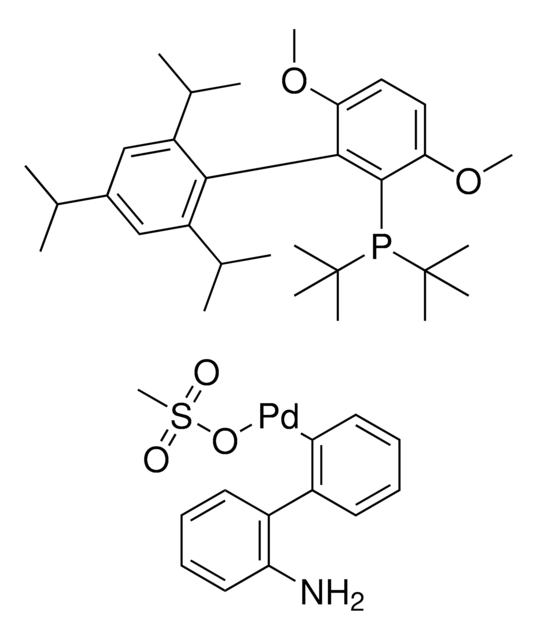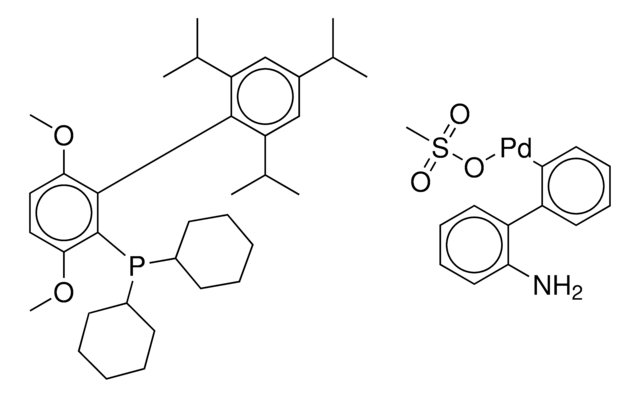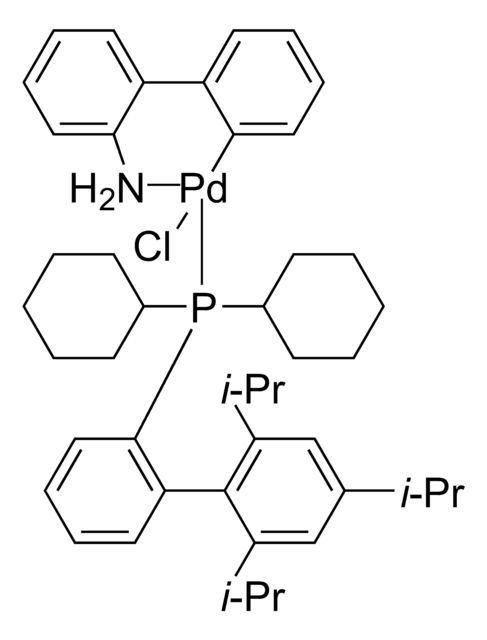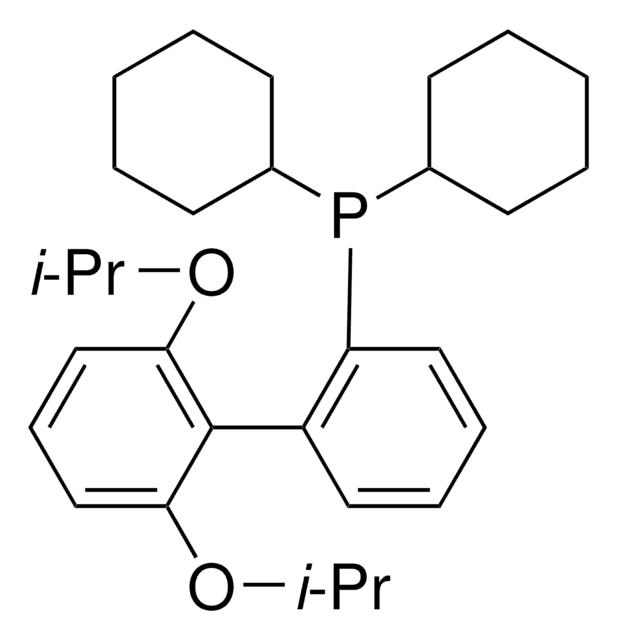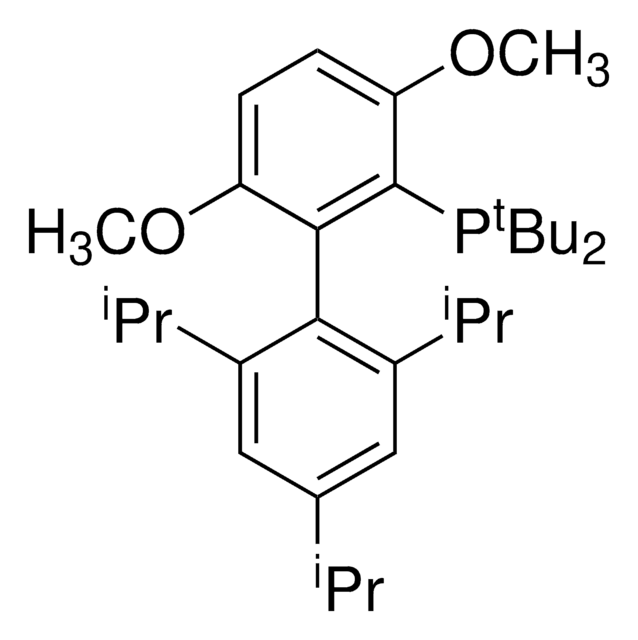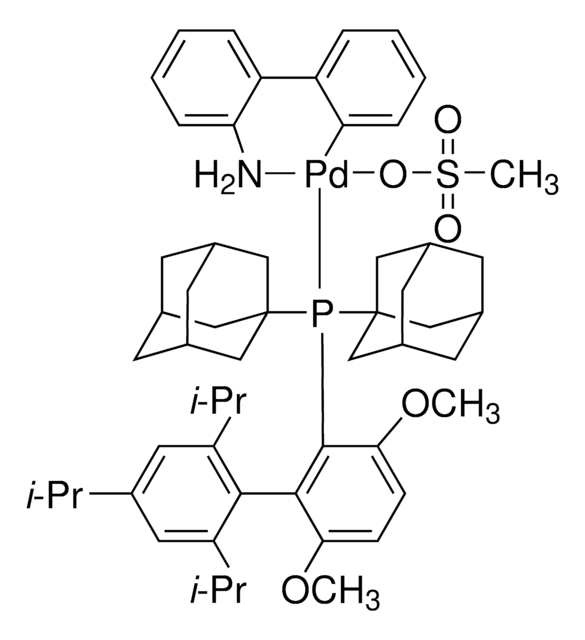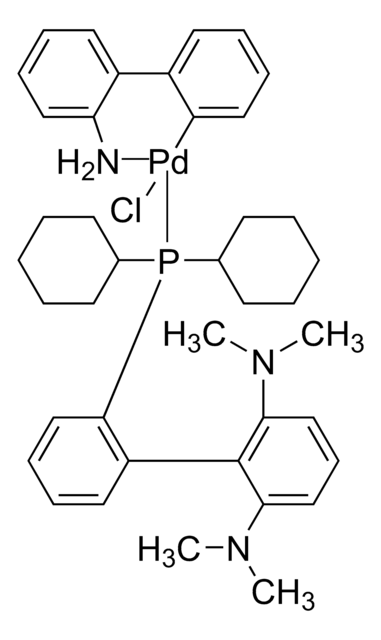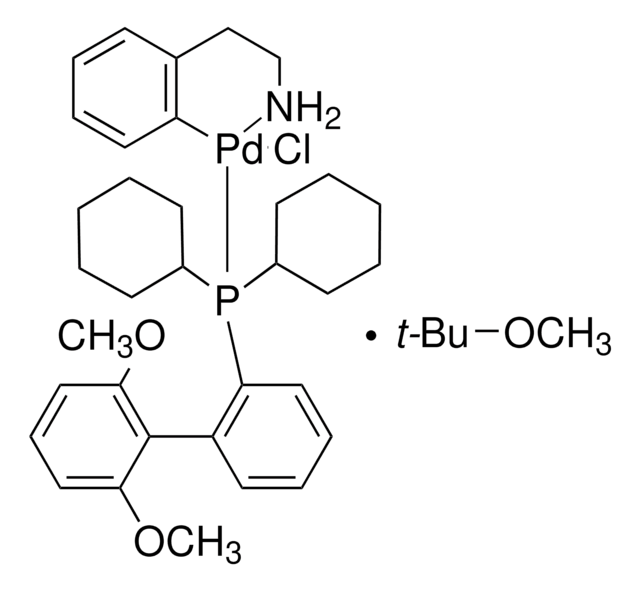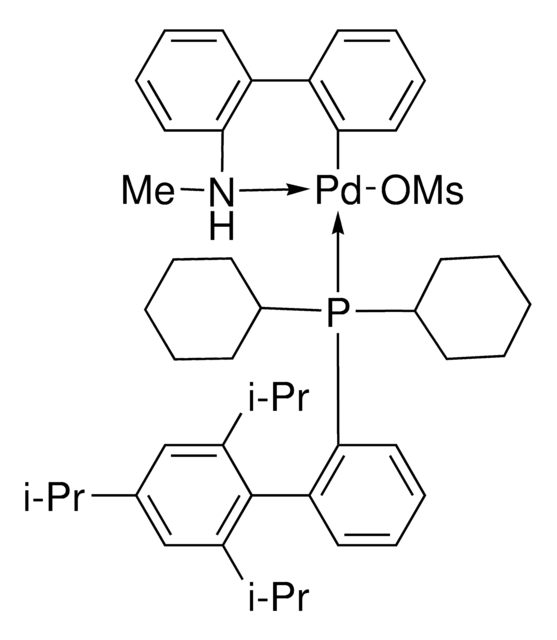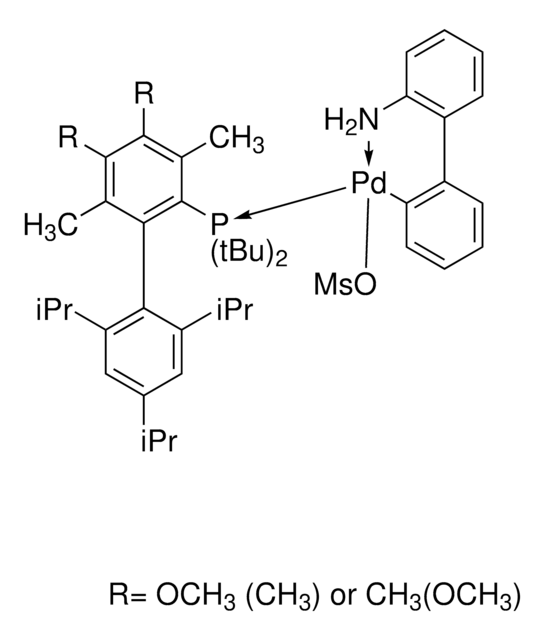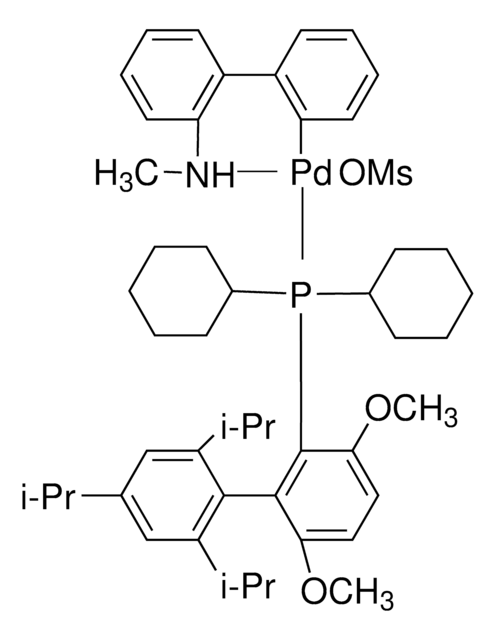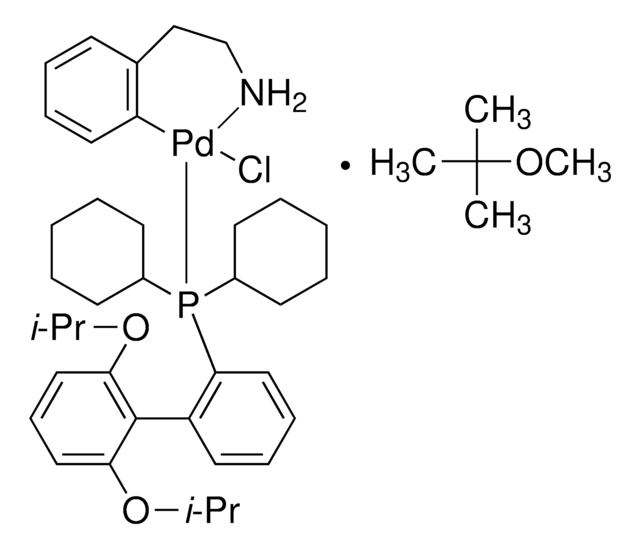708739
tBuXPhos Pd G1
Synonyme(s) :
t-BuXPhos palladium(II) phenethylamine chloride, tBuXPhos-Pd-G1, Chloro[2-(di-tert-butylphosphino)-2′,4′,6′-triisopropyl-1,1′-biphenyl][2-(2-aminoethyl)phenyl)]palladium(II), [2-(Di-tert-butylphosphino)-2′,4′,6′-triisopropyl-1,1′-biphenyl][2-(2-aminoethyl)phenyl)]palladium(II) chloride, t-BuXPhos Palladacycle, t-BuXPhos precatalyst
About This Item
Produits recommandés
Forme
solid
Niveau de qualité
Caractéristiques
generation 1
Pertinence de la réaction
core: palladium
reagent type: catalyst
reaction type: Cross Couplings
Capacité de réaction
reaction type: Buchwald-Hartwig Cross Coupling Reaction
reaction type: Heck Reaction
reaction type: Hiyama Coupling
reaction type: Negishi Coupling
reaction type: Sonogashira Coupling
reaction type: Stille Coupling
reaction type: Suzuki-Miyaura Coupling
Pf
150-159 °C
Groupe fonctionnel
phosphine
Chaîne SMILES
NCCc1ccccc1[Pd]Cl.CC(C)c2cc(C(C)C)c(c(c2)C(C)C)-c3ccccc3P(C(C)(C)C)C(C)(C)C
InChI
1S/C29H45P.C8H10N.ClH.Pd/c1-19(2)22-17-24(20(3)4)27(25(18-22)21(5)6)23-15-13-14-16-26(23)30(28(7,8)9)29(10,11)12;9-7-6-8-4-2-1-3-5-8;;/h13-21H,1-12H3;1-4H,6-7,9H2;1H;/q;;;+1/p-1
Clé InChI
LQRWNWRVOIDQOD-UHFFFAOYSA-M
Application
Informations légales
Mention d'avertissement
Warning
Mentions de danger
Conseils de prudence
Classification des risques
Carc. 2 - Eye Irrit. 2 - Skin Irrit. 2 - STOT SE 3
Organes cibles
Respiratory system
Code de la classe de stockage
11 - Combustible Solids
Classe de danger pour l'eau (WGK)
WGK 3
Point d'éclair (°F)
Not applicable
Point d'éclair (°C)
Not applicable
Équipement de protection individuelle
dust mask type N95 (US), Eyeshields, Gloves
Faites votre choix parmi les versions les plus récentes :
Déjà en possession de ce produit ?
Retrouvez la documentation relative aux produits que vous avez récemment achetés dans la Bibliothèque de documents.
Les clients ont également consulté
Notre équipe de scientifiques dispose d'une expérience dans tous les secteurs de la recherche, notamment en sciences de la vie, science des matériaux, synthèse chimique, chromatographie, analyse et dans de nombreux autres domaines..
Contacter notre Service technique